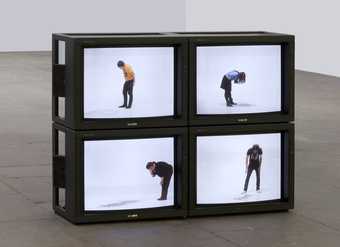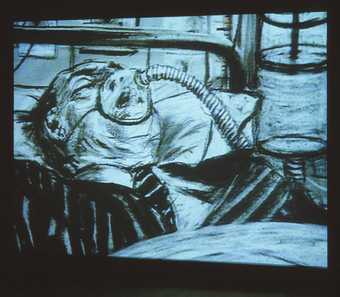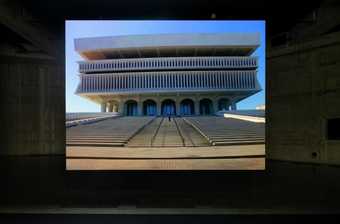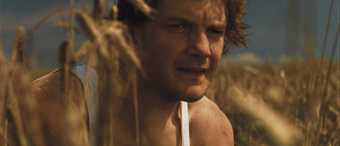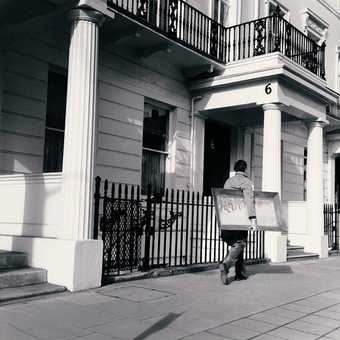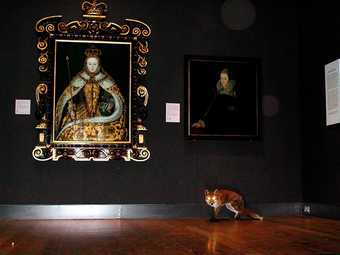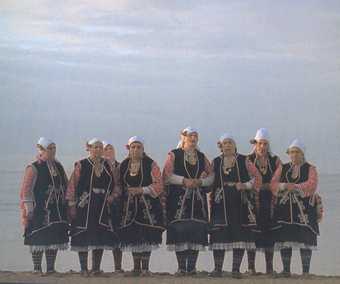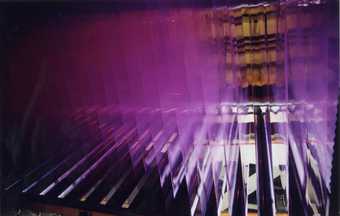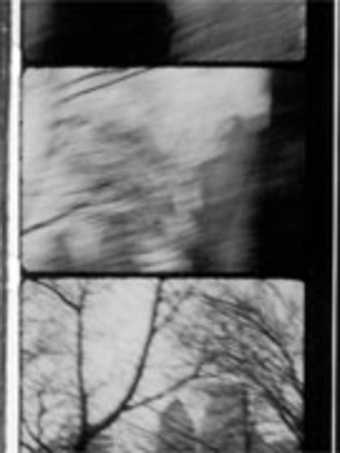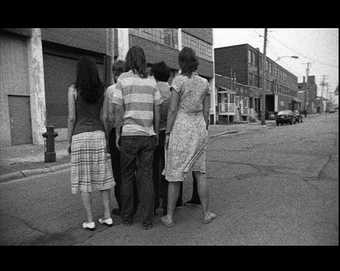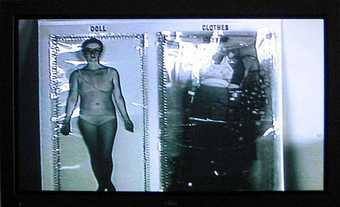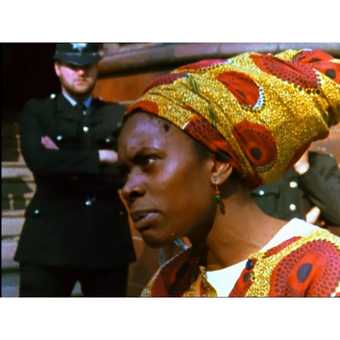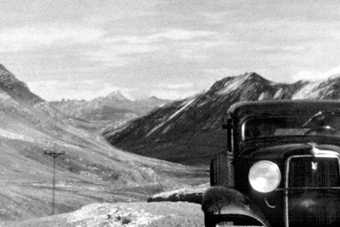Not on display
- Artist
- Francis Alÿs born 1959
- Medium
- Film, 16 mm, shown as video, projection, black and white, and sound, works on paper, 16 paintings, 5 tables, 7 stools, lamps and sofa
- Dimensions
- Collection
- Tate
- Acquisition
- Purchased with funds provided by the American Fund for the Tate Gallery 2002
- Reference
- T07993
Summary
Francis Alÿs’s practice involves making minor interventions or disruptions in everyday situations. While he works across a range of media, his work in general is largely conceptual and performative. Even his painting practice is somewhat subversive. Alÿs regularly employs Mexican sign-painters (rotulistas) to paint enlarged and elaborated versions of his small paintings, which they are free to produce in limitless copies. His intention is to challenge the idea of the original artwork, rendering the process of making more anonymous and deflating the perceived commercial value of art. By disrupting these sorts of patterns, Alÿs plays on social and cultural tensions. Indeed, he claims his paintings and images ‘are only attempting to illustrate the situations I confront, provoke, or perform on a more public, usually urban, and ephemeral level.’ (Alÿs quoted in Douglas Fogle, ed., Painting at the Edge of the World, exhibition catalogue, Walker Art Centre, Minneapolis 2001, p.238.)
Walking or strolling is a recurrent theme in Alÿs’s work, which often stems from notes and observations made while wandering around whichever city he is in. The Last Clown features a painterly animation of man going for a walk, along with a set of images which are studies for or details of the film. In total, the installation includes ninety drawings displayed on a glass topped table, and sixteen paintings on old canvases of various sizes propped on a long, narrow, pine shelf. Most of the images exist as pairs, where the picture is repeated with minor variations. This has precedence in a series of paintings Alÿs completed in 1993-4, collectively titled Déjà-vu. That series, also featuring a grey-suited character, was made up of a number of diptychs in which an image was repeated with very slight alterations. As the title suggests, central to the work was the viewer’s experience of it, with the repetition of the image causing an interruption or a forced backtracking.
The animation is just over a minute in length and displayed as a continuous loop. A man walks along a path in a park dressed in a grey suit, brown shoes and glasses. As he walks towards the top right corner of the frame, facing away from us in three quarter profile, his hands are clasped behind his back, and his gaze is down. A yellow dog passes by in the opposite direction and the man catches his foot on the dog’s tail, causing him to fall on all fours as the dog scampers off. The film is backed by a soundtrack of circus-style jazz, interspersed with peals of canned laughter when the man falls down, and titters when he later turns his head sheepishly towards the viewer. Contemporary artists are often ridiculed in mainstream press with contemporary art variously referred to as absurd or pointless. Alÿs’ work plays on these expectations of an audience, probing the need for us to see the artist as a performer or entertainer.
Further reading:
Francis Alÿs, The Last Clown, exhibition catalogue, Fundació la Caixa, Barcelona, 2000.
Francis Alÿs, The Prophet and the Fly, exhibition catalogue, Centro nazionale per le arti contemporanee, Rome, 2002.
Francis Alÿs, blueOrange 2004: Art Prize of the German Cooperative Banks, exhibition catalogue, Martin-Gropious-Bau, Berlin, 2004.
Maria Bilske
Does this text contain inaccurate information or language that you feel we should improve or change? We would like to hear from you.
Film and audio
You might like
-
Martin Creed Work No. 837
2007 -
Sir Steve McQueen Bear
1993 -
William Kentridge History of the Main Complaint
1996 -
Paul Neagu Going Tornado
1974 -
Shirin Neshat Soliloquy
1999 -
Jesper Just Bliss and Heaven
2004 -
Francis Alÿs The Commuters
2005 -
Francis Alÿs The Nightwatch
2004 -
Bethan Huws Singing for the Sea
1993 -
Tacita Dean CBE Kodak
2006 -
Jonas Mekas Diaries, Notes & Sketches a.k.a. Walden
1964–9 -
Ulla von Brandenburg Around
2005 -
Cindy Sherman Doll Clothes
1975 -
Black Audio Film Collective (John Akomfrah; Reece Auguiste; Edward George; Lina Gopaul; Avril Johnson; David Lawson; Trevor Mathison) Handsworth Songs
1986 -
Matthew Buckingham Situation Leading to a Story
1999


